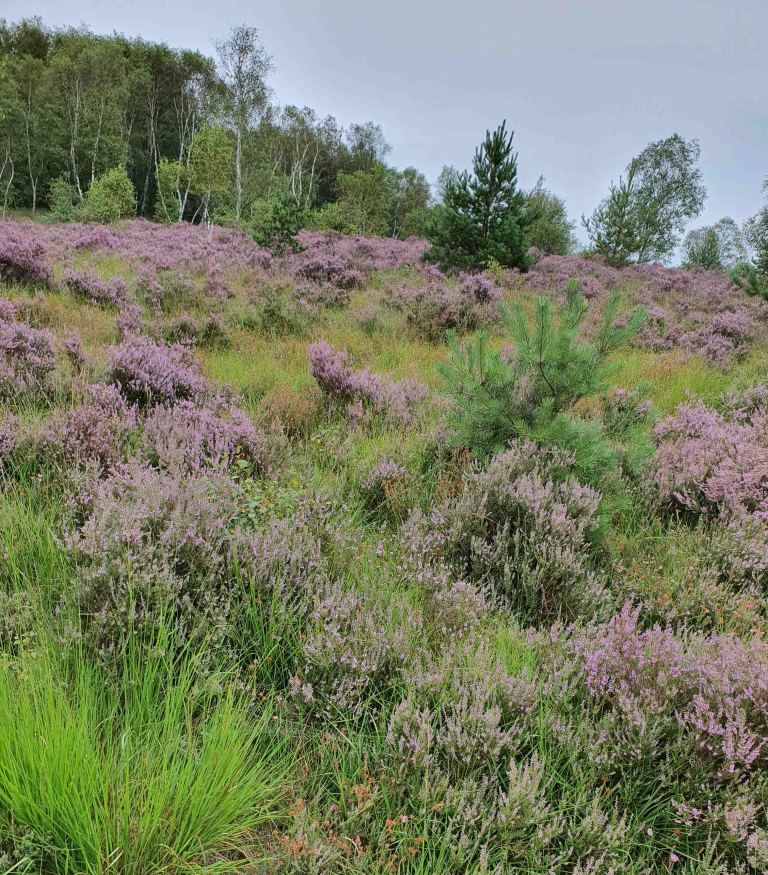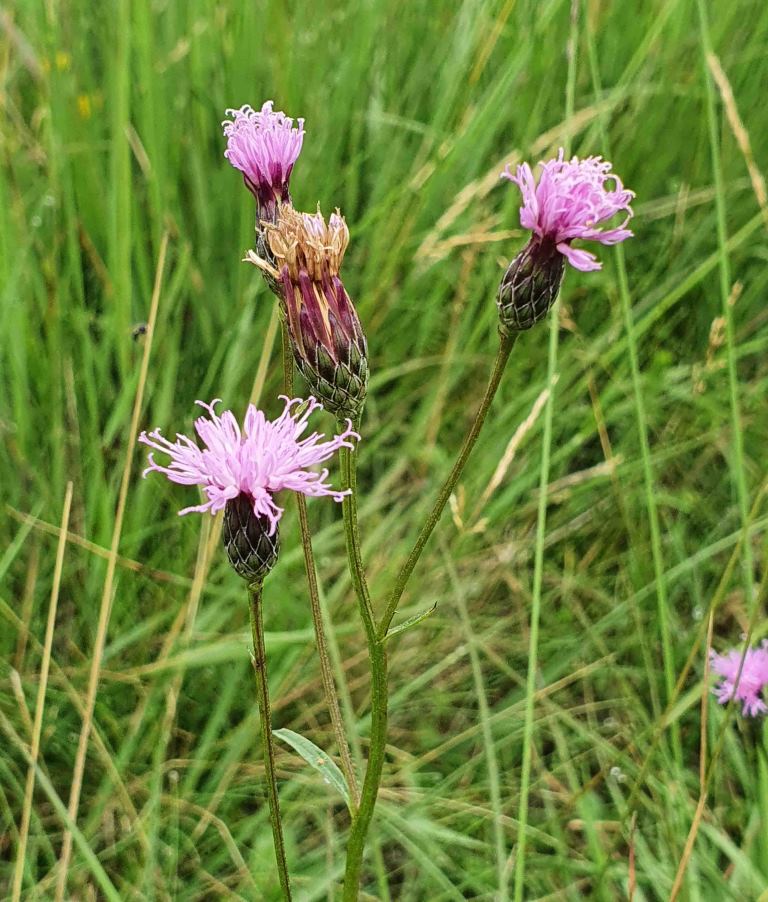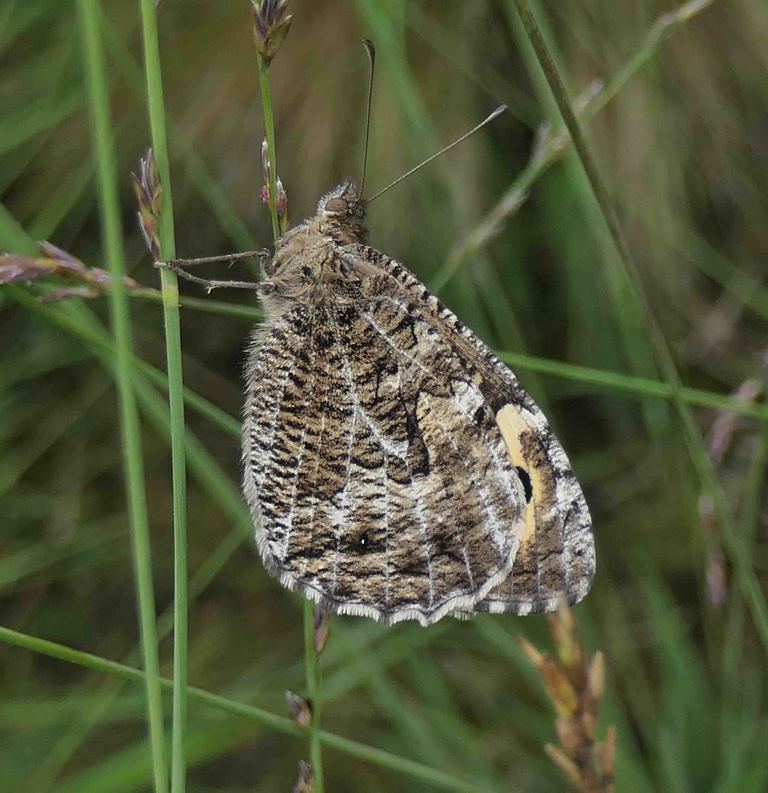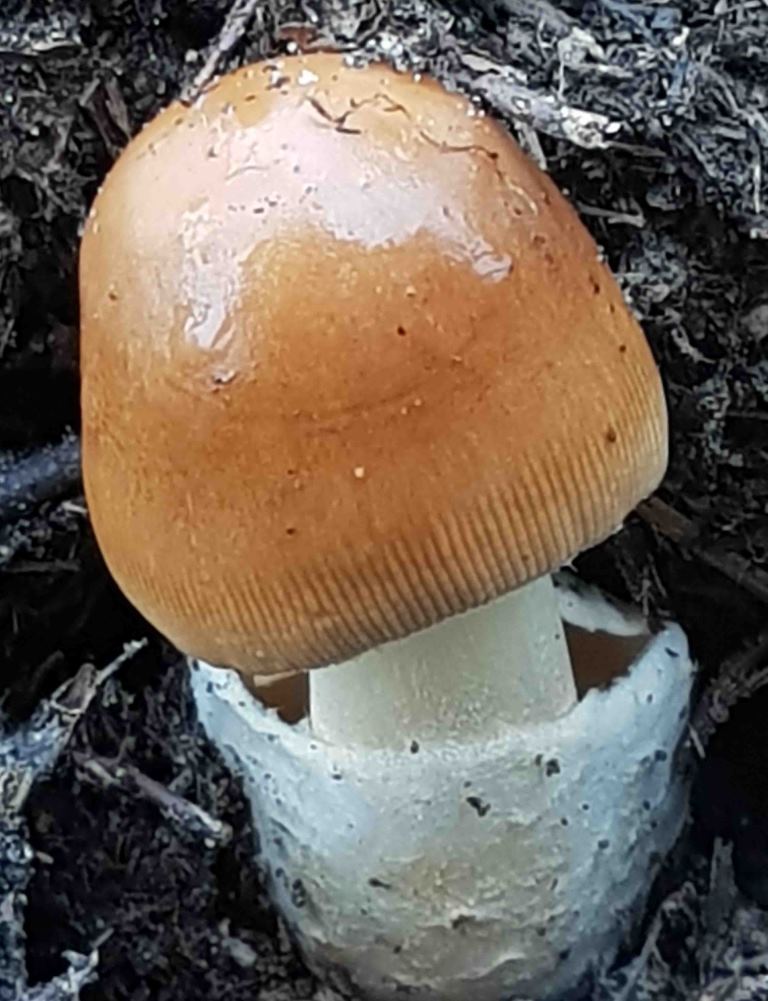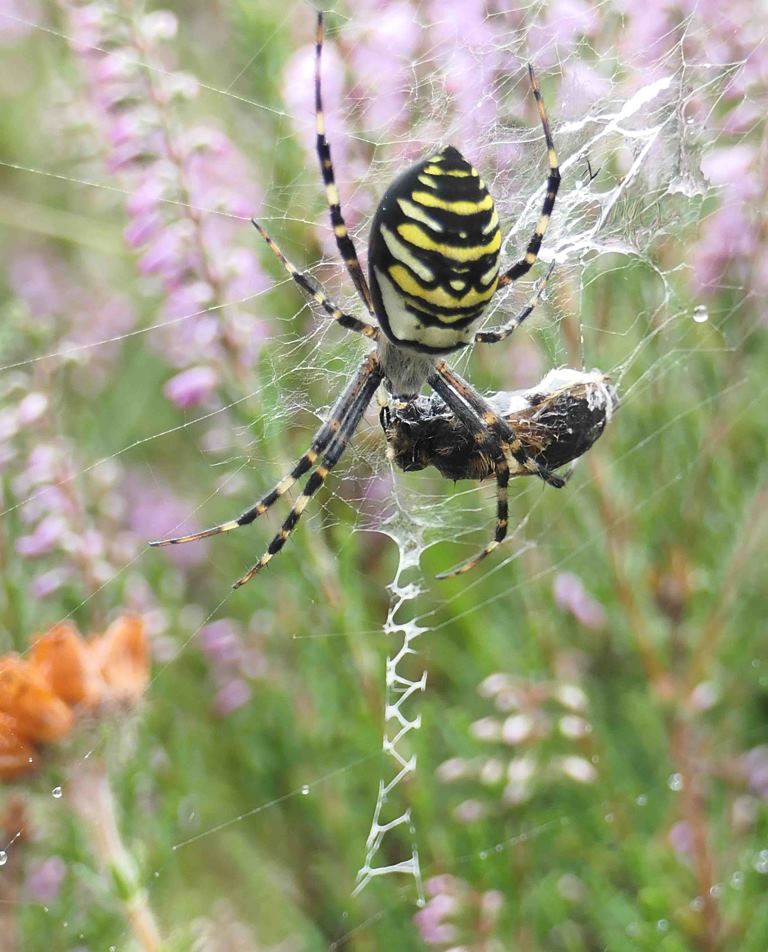Julia Cooper and Ian Duddle led a walk in the north-west section of the extensive Chobham Common National Nature Reserve on Saturday 21 August. It was a grey morning, with occasional light rain. Abundant Common Stork’s-bill and Lesser Swine-cress were seen in the car park, with a large and very hairy Fox Moth caterpillar found nearby. The Common was looking at its best, with extensive areas of flowering heather and large expanses of dark purplish-brown Purple Moor-grass. Setting out north-eastwards, Devil’s-bit Scabious and Saw-wort were found next to the track, and the first of a number of Grayling butterflies was disturbed. A little further on, all three species of heather (Bell Heather, Cross-leaved Heath and Ling) were found in flower together, with Dwarf Gorse nearby. Turning left at a ride junction, Heath Groundsel and Sheep’s Sorrel were seen. A little further on, Petty Whin, with spines and grey-green leaves, was found. The route passed a number of ponds. Brown China-mark moths were found near the first. The leaves of Bog-bean could be seen in the next slightly larger water-body. Several Broad-leaved Helleborine seed-heads were found nearby and there was plentiful Greater Bird’s-foot-trefoil on the other side of the path. A Great Spotted Woodpecker called from the top of a nearby Silver Birch tree. The walk continued down to an area of mire beside the Reading to Waterloo railway line, which marks the northern boundary of the reserve. Tiny white flower spikes were growing up from Round-leaved Sundew plants and the seed heads of Bog Asphodel were seen. In a particularly wet area of the mire were four large yellowish-green Pitcher Plants. The route then led back up onto a ridge with views across a valley to the appropriately named Burnt Hill in the north-west corner of the reserve. This was the location of a serious fire the previous August. The vegetation had mostly grown back and the burnt area looked predominantly green, but blackened tree trunks still delineated the fire area. Several clumps of Golden-rod were found beside the track and a selection of fungi were seen, including Blusher, Tawny Grisette and Common Earthball. Also seen during the morning’s walk were Ochre Brittlegill and a number of unidentified reddish Brittlegill species. The track led to a monument to Queen Victoria. A Common Lizard and a Wasp Spider were spotted amongst the Bracken on the north slope below the monument. In a damper area further down the slope, Heath Milkwort and Devil’s-bit Scabious were in flower. Nearby were about 20 Marsh Gentian flowers. They were growing at the edge of the fire-damaged area and it was speculated that the burning of some of the dense Purple Moor-grass may have been beneficial for the gentians. The track led past a tree-lined pond where Trifid Bur-marigold, Gypsywort and Tufted Forget-me-not were found. Then in the final stretch back to the car, a running Roe Deer was seen.
Pictures by Tom Walker and Laurie Haseler

